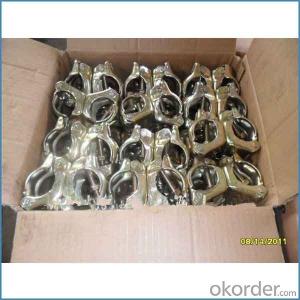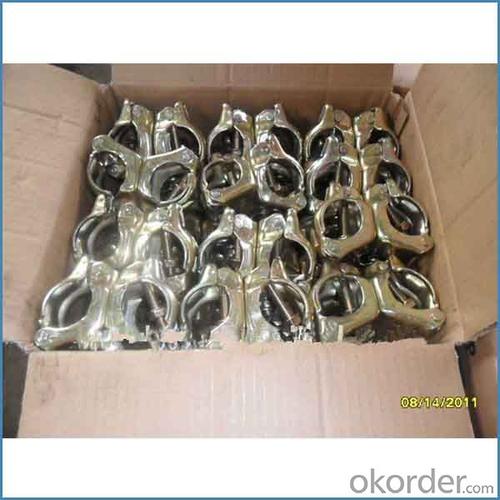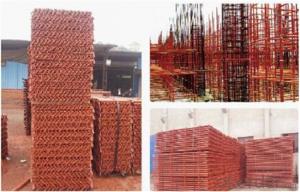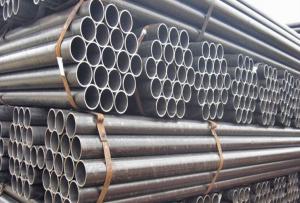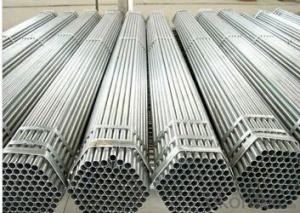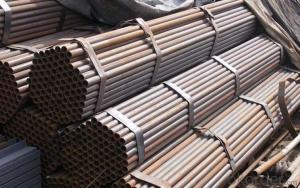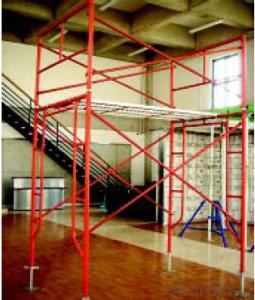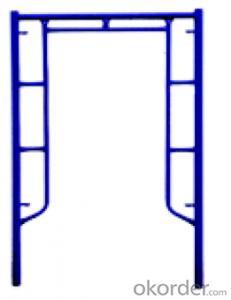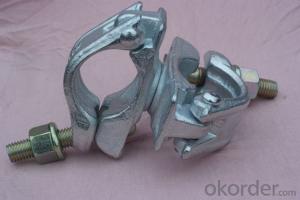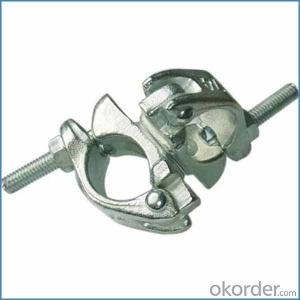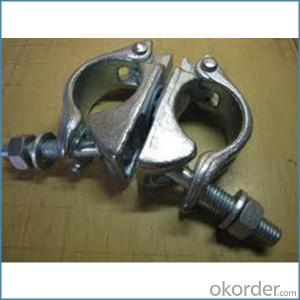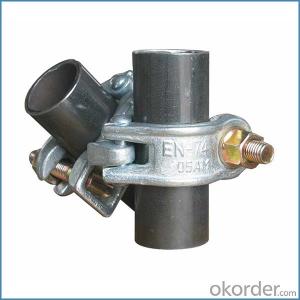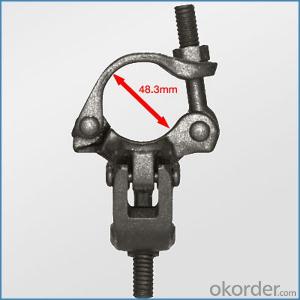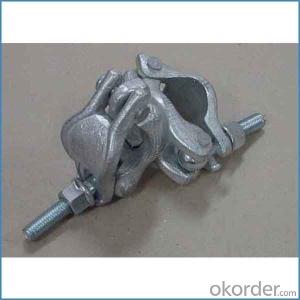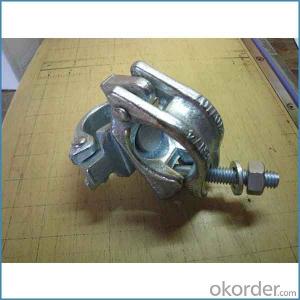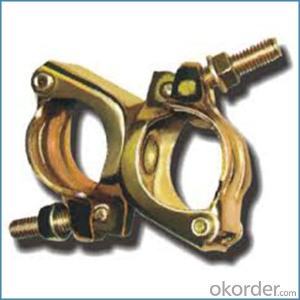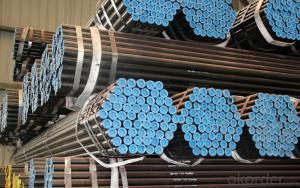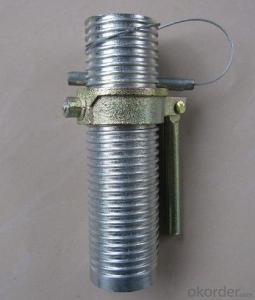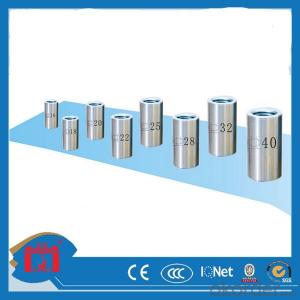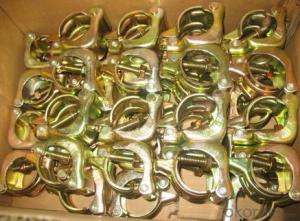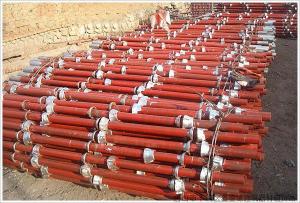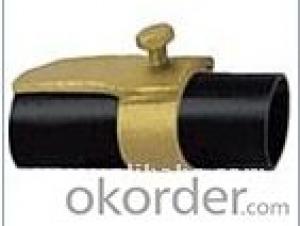Carbon Steel Coupler British Type for Sale
- Loading Port:
- Tianjin
- Payment Terms:
- TT OR LC
- Min Order Qty:
- 1000 kg
- Supply Capability:
- 100000 kg/month
OKorder Service Pledge
OKorder Financial Service
You Might Also Like
Carbon Steel Coupler British Type for Sale
Description
1.The scaffolding coupler is always used to connect the steel pipe as scaffolding system.
2.The often used coupler is swivel coupler and righ angle coupler .
3.We can provide types of scaffolding coupler according to your requirement.
4.Couoler can fix the 48.3mm scaffolding steel pipe tightly and make the whole scaffolding system more steadily.
5.Material:Q235 steel
6.Overall Size:48.3mm*48.3mm
7.Surface Finish: Galvanized/ Painted
8.Standard:BS1139,EN74
9.Package:25pcs/bag
10.Manufactuering as per customer requirements
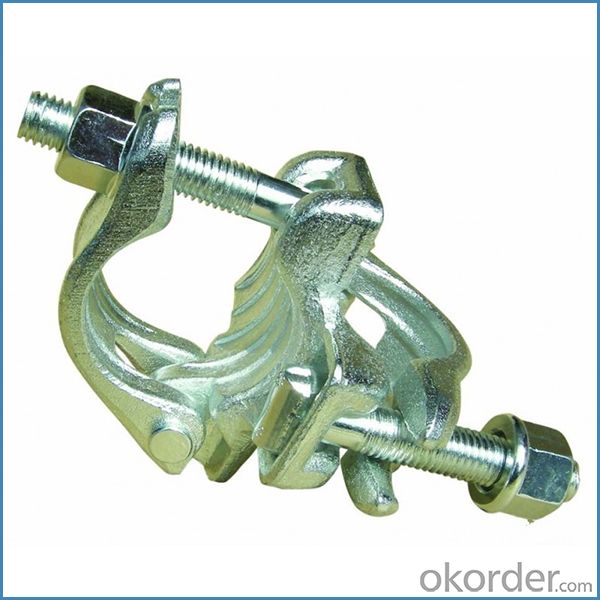
Feature
(1)Excellent Anti-Breaking—Cold Pressed Steel
(2)Outstanding Resistance Deformation
(3)Strong Anti-Dropping Ability
(4)Longtime USe
(5)Qualtity Guaranteed
(6)OEM Service
Photo
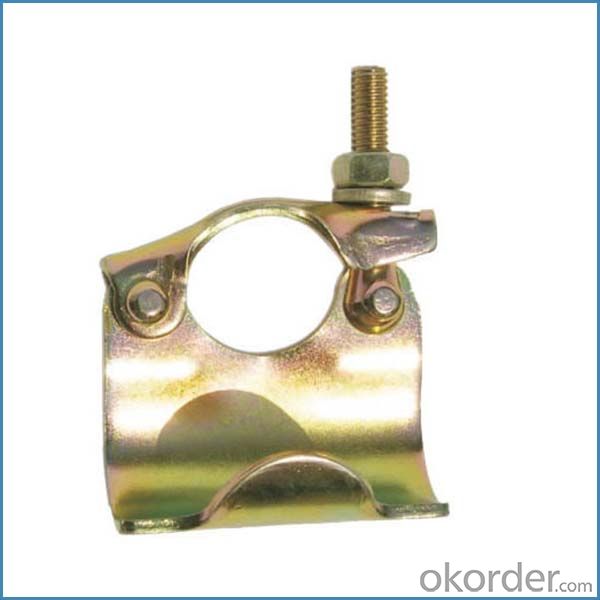
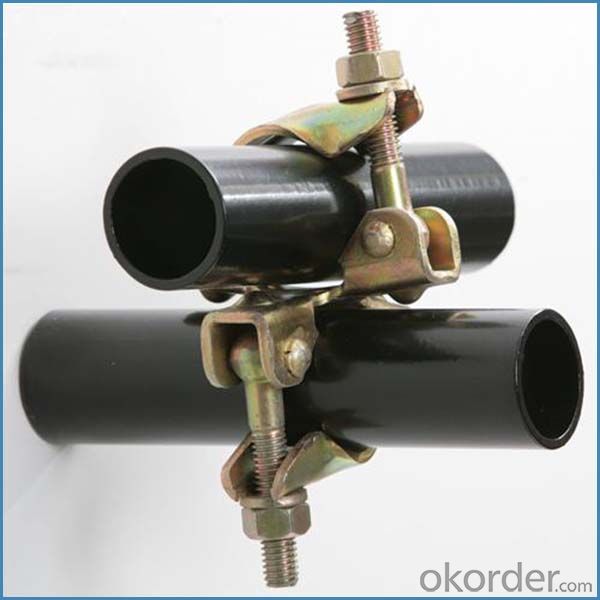
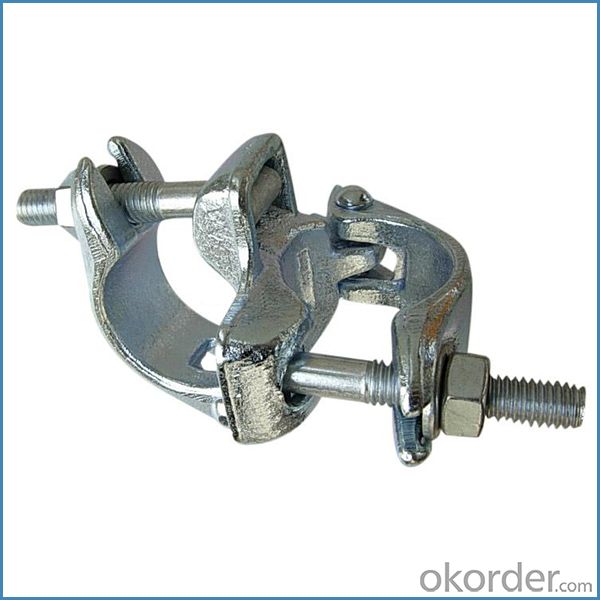
Parameter
| Material | Q235,345steel |
| Size | 48.3mm*48.3mm |
| Surface finish | Galvanized |
| Weight | 1.1kg around |
| Standard | BS1139,EN74 |
| Package | 25pcs/bag,steel pallet |
| Manufacture | As per customer requirement |
| Market | Africa, South America, the Middle East and Asia |
FAQ
Q: Are you a factory or trading company?
We are a state-owned corporation in China,dealing with various kinds of building materials.We have our holding subsidiaries.
Q: Where is your factory located? How can I visit there?
Our factory is located all around China.
Q: Can I get some samples?
Sample is free, customer only pay freight for the first time.
Q: Delivery?
10-30days. (5-15 containers)
Any question,feel free to contact us.
- Q: Are steel tube couplers compatible with other scaffolding systems?
- Yes, steel tube couplers are generally compatible with other scaffolding systems. Steel tube couplers are designed to connect and secure steel tubes used in scaffolding structures. These couplers have a standardized design that allows them to be used with various types of scaffolding systems. As long as the dimensions of the steel tubes used in the scaffolding are compatible with the couplers, they can be easily connected and used together. This compatibility makes steel tube couplers a versatile and widely used component in the construction industry.
- Q: Are there any specific guidelines for spacing steel tube couplers in scaffolding structures?
- Yes, there are specific guidelines for spacing steel tube couplers in scaffolding structures. The exact spacing will depend on factors such as the load capacity requirements, the type of scaffolding being used, and the specific regulations and standards of the country or region. Generally, couplers should be spaced at regular intervals along the steel tubes to ensure proper stability and structural integrity of the scaffolding system. It is important to consult relevant safety codes, manufacturer's instructions, and qualified professionals to determine the appropriate spacing for steel tube couplers in scaffolding structures.
- Q: Are there any specific guidelines for inspecting steel tube couplers during scaffolding erection?
- Yes, there are specific guidelines for inspecting steel tube couplers during scaffolding erection. These guidelines typically include checking for any signs of damage or deformation, ensuring proper fit and alignment, verifying secure connection and tightness, and examining for any corrosion or rust. It is important to follow these guidelines to ensure the safety and integrity of the scaffolding structure.
- Q: How do steel tube couplers perform in areas with high levels of electromagnetic interference?
- Areas with high levels of electromagnetic interference (EMI) typically see good performance from steel tube couplers. This is because steel, being highly conductive, acts as a shield against external electromagnetic fields. Steel tube couplers function as a Faraday cage, effectively blocking or reducing the penetration of electromagnetic waves. EMI can originate from different sources, including power lines, radio signals, or electronic devices. In high EMI areas, it is crucial to use materials that offer effective shielding to prevent signal degradation or interference. Steel tube couplers, with their exceptional electrical conductivity, provide a reliable solution in such environments. Moreover, steel tube couplers are often designed with proper grounding techniques, further improving their ability to withstand electromagnetic interference. Grounding helps divert the electromagnetic energy away from the couplers, minimizing the impact of EMI. However, it is important to acknowledge that the performance of steel tube couplers in high EMI areas can still be influenced by factors such as frequency, intensity, and proximity of the electromagnetic sources. In extreme cases, additional measures like electromagnetic shielding or filtering may be necessary to ensure optimal performance. In summary, steel tube couplers are generally dependable in areas with high levels of electromagnetic interference, offering a strong and efficient solution for various applications.
- Q: Are steel tube couplers compatible with scaffolding projects involving temporary shelters or enclosures?
- Steel tube couplers can be used in scaffolding projects that involve temporary shelters or enclosures. They are frequently employed in scaffolding systems to join and fasten steel tubes, guaranteeing a robust and dependable connection for the stability and structural soundness of the scaffolding. Steel tube couplers are suitable for constructing a secure and safe scaffolding structure, whether it is for supporting temporary shelters or enclosures. Moreover, they offer versatility, enabling different configurations and adjustments to meet the specific needs of the temporary shelter or enclosure.
- Q: Can steel tube couplers be used for scaffolding on uneven surfaces?
- To scaffold on uneven surfaces, precautions must be taken when using steel tube couplers. It is essential to level and stabilize the scaffolding carefully when working on uneven terrain. Achieving a level base for the scaffolding can be done by utilizing adjustable base plates or screw jacks. Moreover, it is of utmost importance to consistently check and ensure the stability of the scaffolding, particularly on uneven surfaces, to prevent accidents or collapses. As long as the scaffolding structure is adequately supported and secured, the couplers can still be effectively used on uneven surfaces.
- Q: Can steel tube couplers be used in scaffolding projects with complex structures?
- Yes, steel tube couplers can be used in scaffolding projects with complex structures. Steel tube couplers are designed to securely connect steel tubes, allowing for the creation of stable scaffolding structures. These couplers provide a strong and reliable connection, making them suitable for scaffolding projects of various complexities.
- Q: I would say because she would not want to meet Chillingworth one on one. So, would that be right?
- Symbolically the scaffold represents the strict moral code of the Puritans. It displays Hester's act and her punishment and the only place where Dimmesdale is safe from the reach of Chillingworth. It also represents acknowledgment of sin. It is here that both Hester and Dimmesdale acknowledge their sin.
- Q: How do steel tube couplers ensure a secure connection without damaging the tubes?
- The secure connection between tubes is guaranteed by steel tube couplers, which combine design features and material properties to prevent any damage. To begin, steel tube couplers are meticulously engineered to fit the tubes perfectly, ensuring a tight and secure fit. This precise design eliminates any play or movement when the tubes are inserted into the couplers. Consequently, the risk of slippage or misalignment is minimized, resulting in a secure connection. Furthermore, steel tube couplers often incorporate internal gripping mechanisms or teeth that enhance the connection's strength and stability. These features create an interlocking effect between the coupler and the tube, evenly distributing the load across the tube surface. By doing so, any localized stress concentration that could potentially damage the tubes is minimized. In addition, steel possesses exceptional strength and durability properties, making it an ideal material for tube couplers. Its high tensile strength and resistance to deformation allow the couplers to withstand significant loads without yielding or deforming. As a result, the tubes are securely held in place without suffering any damage, even under extreme conditions or heavy loads. Moreover, steel tube couplers often incorporate protective measures, such as coatings or galvanization, to prevent corrosion. These protective layers safeguard the coupler from rust and corrosion, which could weaken the connection and potentially damage the tubes over time. By preserving the integrity of the couplers, the risk of tube damage is significantly reduced. In conclusion, the combination of precise design, internal gripping features, the strength of steel, and protective coatings ensures a secure connection between tubes without causing any damage. This comprehensive approach creates a dependable and robust connection that can withstand loads and forces without compromising the tubes' integrity.
- Q: Can steel tube couplers be used in high-rise scaffolding projects?
- Yes, steel tube couplers can be used in high-rise scaffolding projects. Steel tube couplers are commonly used in scaffolding systems to connect and secure steel tubes together. They provide a strong and reliable connection, making them suitable for the demanding requirements of high-rise scaffolding projects.
Send your message to us
Carbon Steel Coupler British Type for Sale
- Loading Port:
- Tianjin
- Payment Terms:
- TT OR LC
- Min Order Qty:
- 1000 kg
- Supply Capability:
- 100000 kg/month
OKorder Service Pledge
OKorder Financial Service
Similar products
Hot products
Hot Searches
Related keywords
